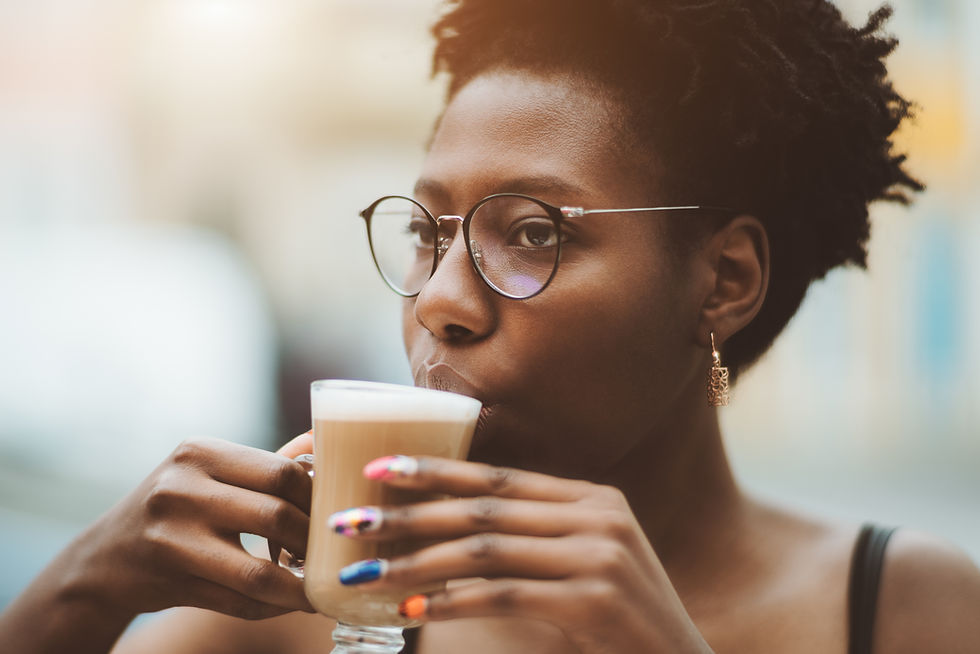Journey to Chocolate...
- Batsi the Trainer
- Dec 17, 2021
- 4 min read

Cocoa is the essential ingredient for chocolate. Chocolate comes from the cacao tree, scientifically known as Theobroma Cacao. Cacao is actually the dried and fully fermented seed from this tree. The cacao tree is very delicate and sensitive, needing protection from direct wind and the direct sun. This is why you see most cacao farmers replicate a natural forest concept with tall trees in order to provide shade and shield for the cacao tree.
The cacao tree grows in the tropical heat and temperatures along the equator. The tree develops flowers all year round, in two cycles of six months. `its cocoa pods (fruit) are full-grown and are ready to be harvested after six months hence there are two harvests per year.
At harvest, cocoa fruit averagely contains about 30–40 seeds covered by a mucilaginous pulp removed by yeast and bacteria during fermentation, which is a key step for the development of the chocolate flavour. This is what we popularly call cacao beans. During this period a series of fermentation processes are set in motion from alcoholic, then lactic and then acetic. .
In order to prevent further fermentation, the cacao beans go through a drying process. This usually happens in the sun. Dried cocoa beans or nibs are then roasted to further develop the chocolate flavour and helps to separate the outer husk from the cacao nibs. Roasting the beans is important to get rid of any remaining liquid content from the beans. it also kills any bacteria on the beans.
Cracking & Winnowing is one of the next important stage in this process, This simple is removing the cocoa bean from the shell to reveal the cacao nibs inside. Some actually do it before the roasting.
The cocoa nibs are ground into a paste called cacao liquor or cacao mass. Cacao liquor means it’s into liquid form, although it contains both cocoa solids and cocoa butter in roughly equal proportion. It usually has a texture of deep, dark brown colour, with very rich and aromatic with a bitter taste. We then left with a higher fat content as the beans haven’t been processed to separate the cacao butteFrom cacao to chocolate
Cocoa is the essential ingredient for chocolate. Chocolate comes from the cacao tree, scientifically known as Theobroma Cacao. Cacao is actually the dried and fully fermented seed from this tree. The cacao tree is very delicate and sensitive, needing protection from direct wind and the direct sun. This is why you see most cacao farmers replicate a natural forest concept with tall trees in order to provide shade and shield for the cacao tree.
The cacao tree grows in the tropical heat and temperatures along the equator. The tree develops flowers all year round, in two cycles of six months. `its cocoa pods (fruit) are full-grown and are ready to be harvested after six months hence there are two harvests per year.
At harvest, cocoa fruit averagely contains about 30–40 seeds covered by a mucilaginous pulp removed by yeast and bacteria during fermentation, which is a key step for the development of the chocolate flavour. This is what we popularly call cacao beans. During this period a series of fermentation processes are set in motion from alcoholic, then lactic and then acetic. .
In order to prevent further fermentation, the cacao beans go through a drying process. This usually happens in the sun. Dried cocoa beans or nibs are then roasted to further develop the chocolate flavour and helps to separate the outer husk from the cacao nibs. Roasting the beans is important to get rid of any remaining liquid content from the beans. it also kills any bacteria on the beans.
Cracking & Winnowing is one of the next important stage in this process, This simple is removing the cocoa bean from the shell to reveal the cacao nibs inside. Some actually do it before the roasting.
The cocoa nibs are ground into a paste called cacao liquor or cacao mass. Cacao liquor means it’s into liquid form, although it contains both cocoa solids and cocoa butter in roughly equal proportion. It usually has a texture of deep, dark brown colour, with very rich and aromatic with a bitter taste. We then left with a higher fat content as the beans haven’t been processed to separate the cacao butter from the solids. The cocoa mass can be heavily pressed until the cocoa butter is squeezed out, and it is separated into cocoa powder and cocoa. You can however use it directly in making the chocolate.
Depending on the kind of chocolate, and the person making the chocolate , here are some guideline ingredients which you can use as basic:
Dark chocolate: Cocoa liquor + cocoa butter + sugar Milk chocolate: Cocoa liquor + cocoa butter + sugar + milk powder White chocolate: Cocoa butter + sugar + milk powder
We can make hot chocolate, Gelato and chocolate bars and the list goes on. The world of chocolate is really makes you feel like Alice in wonderland and makes you want to keep going down the rabbit hole.
r from the solids. The cocoa mass can be heavily pressed until the cocoa butter is squeezed out, and it is separated into cocoa powder and cocoa. You can however use it directly in making the chocolate.
Depending on the kind of chocolate, and the person making the chocolate , here are some guideline ingredients which you can use as basic:
Dark chocolate: Cocoa liquor + cocoa butter + sugar Milk chocolate: Cocoa liquor + cocoa butter + sugar + milk powder White chocolate: Cocoa butter + sugar + milk powder
We can make hot chocolate, Gelato and chocolate bars and the list goes on. The world of chocolate is really makes you feel like Alice in wonderland and makes you want to keep going down the rabbit hole.






Comments